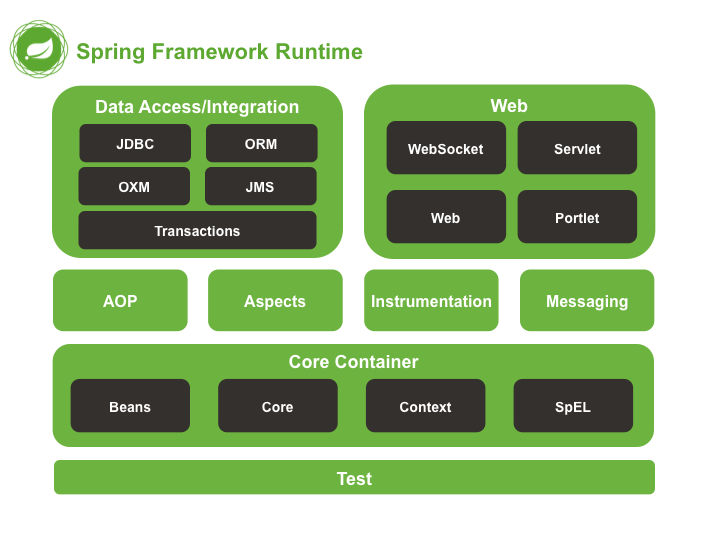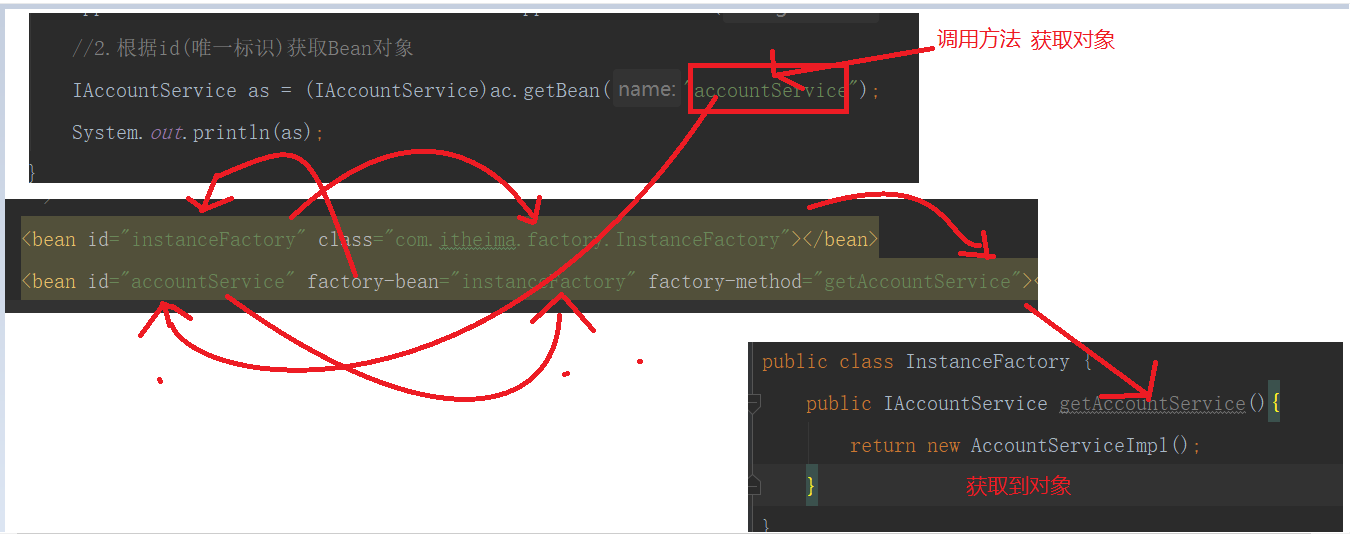Spring概述 spring是什麼:Spring是分層的JavaSE/EE應用full stack輕量級開源框架以IOC(Inverse Of Control:反轉控制)和AOP(Aspect Oriented Programming:面向切麵編程)為內核,提供了展現SpringMVC和持久層Sp ...
Spring概述
spring是什麼:Spring是分層的JavaSE/EE應用full-stack輕量級開源框架以IOC(Inverse Of Control:反轉控制)和AOP(Aspect Oriented Programming:面向切麵編程)為內核,提供了展現SpringMVC和持久層Spring JDBC以及業務層事務管理等眾多的企業級應用技術,還能整合開源世界眾多著名的第三方框架和類庫,逐漸成為使用最多的Java EE企業應用開源框架
spring體繫結構
編寫JDBC代碼分析程式的耦合
//程式的耦合
public class JdbcDemo1 {
public static void main(String[] args) throws SQLException {
//1.註冊驅動
DriverManager.registerDriver(new com.mysql.jdbc.Driver());
//2.獲取連接
Connection conn = DriverManager.getConnection("jdbc:mysql://localhost:3306/eesy","root","12345");
//3.獲取操作資料庫的㔘對象
PreparedStatement pstm = conn.prepareStatement("select * from account");
//4.執行SQL,得到結果集
ResultSet rs = pstm.executeQuery();
//5.遍歷結果集
while(rs.next()){
System.out.println(rs.getString("name"));
}
//6.釋放資源
rs.close();
pstm.close();
conn.close();
}
}
導入依賴jar包-MySQL
<dependencies>
<dependency>
<groupId>mysql</groupId>
<artifactId>mysql-connector-java</artifactId>
<version>5.1.6</version>
</dependency>
</dependencies>現在如果把依賴jar包去掉,則會發生編譯期異常

耦合:程式間的依賴關係。包括類之間的依賴,方法之間的依賴
解耦:降低程式間的依賴關係
在實際開發中,應該做到編譯期不依賴,運行時才依賴
解耦思路:第一步,使用反射來創建對象,而避免使用new關鍵字,第二步:通過讀取配置文件來獲取要創建的對象全限定類名
控制反轉(Inversion of Control)把創建對象的權利交給框架,是框架的重要特征,並非面向對象編程的專用術語。他包括依賴註入(Dependency Injection簡稱DI)和依賴查找
明確sping的IOC的作用:
削減電腦程式的耦合(解除我們代碼中的依賴關係),並不做增刪改查操作,
spring基於XML的IOC環境搭建和入門
1.導入jar包
<dependencies>
<dependency>
<groupId>org.springframework</groupId>
<artifactId>spring-context</artifactId>
<version>5.0.2.RELEASE</version>
</dependency>
</dependencies>2.xml文件導入約束
<?xml version="1.0" encoding="UTF-8"?>
<beans xmlns="http://www.springframework.org/schema/beans"
xmlns:xsi="http://www.w3.org/2001/XMLSchema-instance"
xsi:schemaLocation="http://www.springframework.org/schema/beans
http://www.springframework.org/schema/beans/spring-beans.xsd">
</beans>3.把對象的創建交給spring來管理
<!--把對象的創建交給spring來管理-->
<bean id="accountService" class="com.itheima.service.impl.AccountServiceImpl"></bean>
<bean id="accountDao" class="com.itheima.dao.impl.AccountDaoImpl"></bean>
4.獲取spring的Ioc核心容器,並根據id獲取對象
public static void main(String[] args) {
//獲取核心容器對象
ApplicationContext ac = new ClassPathXmlApplicationContext("bean.xml");
//2.根據id(唯一標識)獲取Bean對象
IAccountService as = (IAccountService)ac.getBean("accountService");
IAccountDao adao = ac.getBean("accountDao",IAccountDao.class);
System.out.println(as);
System.out.println(adao);
}ApplicationCntext的常用三個實現類:
1.ClassPathXmlApplicationContext:可以載入類路徑下的配置文件,要求配置文件必須在類路徑下
2.FileSystemXmlApplicationContext:載入磁碟任意路勁下的配置文件(必須有訪問許可權)
3.AnnotationConfigApplicationContext:用於讀取註解創建容器的
ApplicationCntext和BeanFactory都是創建對象的,他們有什麼區別
ApplicationCntext:他在創建核心容器是,創建對象策略是採用立即載入的方式。也就是說,只要一讀取完配置文件就創建配置文件中配置的對象
BeanFactory:他在創建核心容器時,創建對象採取的策略是採用延遲載入的方式,也就是說,什麼時候根據id獲取對象,就什麼時候創建對象
spring中bean的細節之三種創建Bean對象的方式
第一種方式
<!--第一種方式:使用預設構造函數創建
在spring額配置文件中使用bean標簽,配以id和class屬性之後,且沒有其他屬性和標簽時
採用的就是預設構造函數創建bean對象,此時如果類中沒有預設的構造函數,則對象創立失敗
-->
<bean id="accountService" class="com.itheima.service.impl.AccountServiceImpl"></bean>第二種方式
模擬的工廠類
package com.itheima.factory;
import com.itheima.service.IAccountService;
import com.itheima.service.impl.AccountServiceImpl;
public class InstanceFactory {
public IAccountService getAccountService(){
return new AccountServiceImpl();
}
} <!--第二種方式:
使用普通工廠中的方法創建對象(使用某個類中的方法創建,並存入spring容器)
-->
<bean id="instanceFactory" class="com.itheima.factory.InstanceFactory"></bean>
<bean id="accountService" factory-bean="instanceFactory" factory-method="getAccountService"></bean>
第三種方式
模擬的工廠類
package com.itheima.factory;
import com.itheima.service.IAccountService;
import com.itheima.service.impl.AccountServiceImpl;
public class StaticFactory {
public static IAccountService getAccountService(){
return new AccountServiceImpl();
}
}
<!--第三種方式:
使用工廠中的靜態方法創建對象(使用某個類的靜態方法創建對象,並存入spring容器中)
-->
<bean id="accountService" class="com.itheima.factory.StaticFactory" factory-method="getAccountService"></bean>


